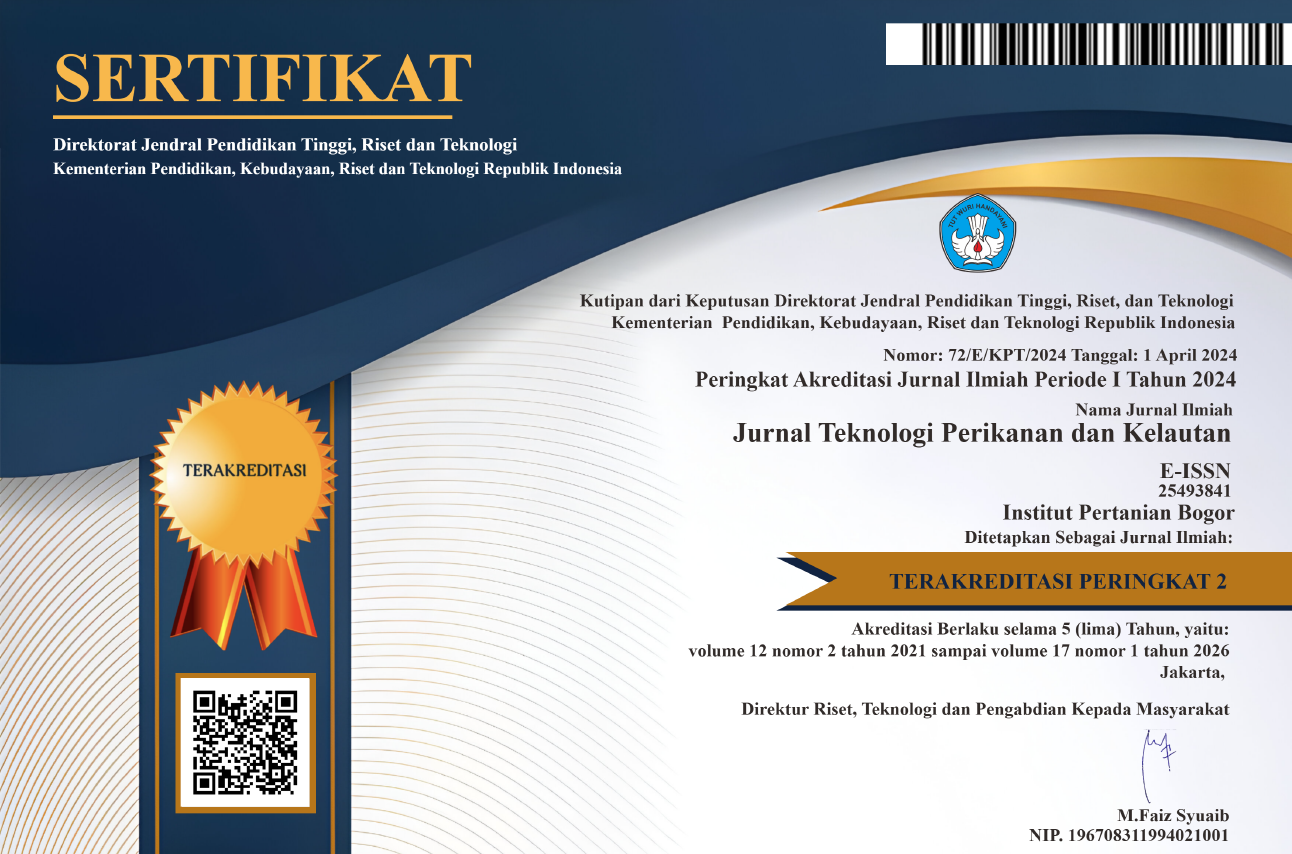PENGARUH PENGGUNAAN LAMPU ATRAKTOR CELUP TERHADAP HASIL TANGKAPAN JARING INSANG PERMUKAAN DI PERAIRAN SELAYAR
Abstract
The principle operation of gill nets is by blocking movement of the fish. Its success rate depends on the precision fixing of the net. One solution to improve fishing methods is to add a fish net of underwater attractor lamp. The type lamp that suitable is a light emitting diode (LED) lamp. The purpose of research was determine the composition of the type fish caught and prove that the use of underwater attractor lamp increased the diversity of species and number of fish produced. Gill nets surface used in this study contained of two units. One unit was equipped with an underwater attractor lamp. The results showed that the use underwater attractor lamp did not affect the diversity of fish caught. Two gill nets catch the same 20 kinds of fish, specifically orangestriped emperor (Lethrinus obsoletus), smalltooth emperor (Lethrinus microdon), thumbprint emperor (Lethrinus harak), yellowtail emperor (Lethrinus atkinsoni), ornate emperor (Lethrinus ornatus), dots and dashes ponyfish (Secutor indicius), pugnose ponyfish (Secutor insidiator), Paddletail Snapper (Lutjanus gibbus), Golden Snapper (Lutjanus johnii), longfin Mullet (Moolgarda perusii), bluespot mullet (Moolgarda seheli), whitespotted rabbitfish (Siganus canaliculatus), doublebar rabbitfish (Siganus virgatus), javan rabbitfish (Siganus javus), masked rabbitfish (Siganus puellus), goldspotted rabbitfish (Siganus punctatus), tille trevally (Caranx tille), blackstreak surgeonfish (Acanthurus nigricauda), lowfin chub (Kyphosus vaigiensis), and milkfish (Chanos chanos). However, the use of underwater attractor lamp was proven to increase the number of fish caught with gill nets by 1,924 fish, or 74% more than gill nets without lamp (1,108 fish).
Copyright (c) 2022 Jurnal Teknologi Perikanan dan Kelautan

This work is licensed under a Creative Commons Attribution-NonCommercial-ShareAlike 4.0 International License.





















